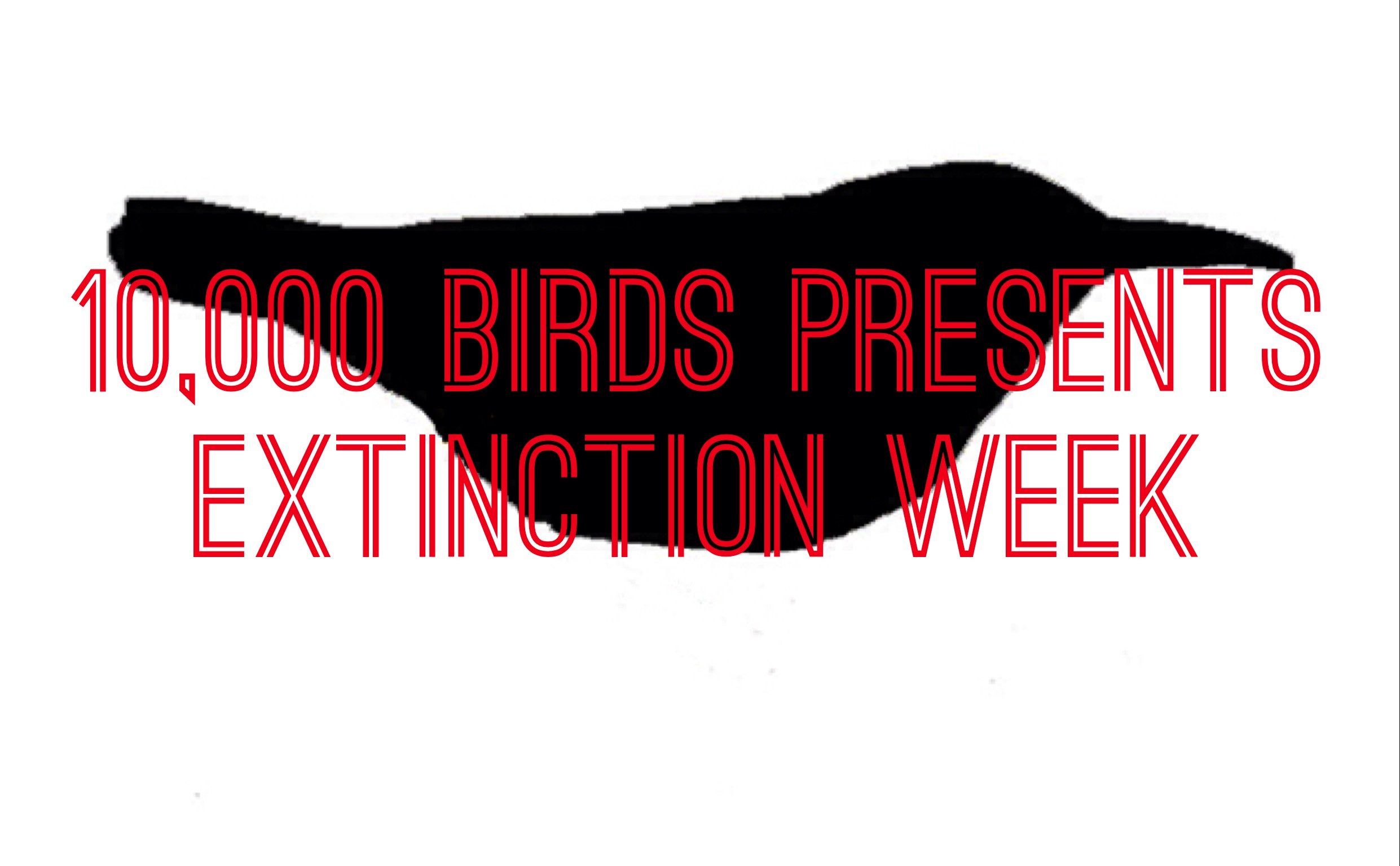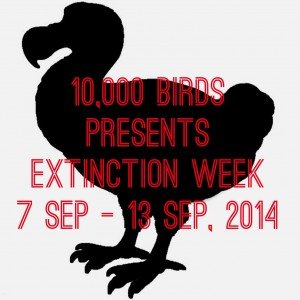
Extinction endures long past regret or even memory. We nature lovers, celebrants of life in all its exquisite multiformity, feel more keenly than most the loss of even the most undifferentiated species. We miss them all: the parrots, the pigeons, the moas and titan-hawks and stilt-owls and myriads of endlessly exotic avifauna we will never ever know again as they were when they graced this Earth.
How many have we lost, have we never even known? More than most could imagine, as Duncan estimated when pondering why this site is not called 12,000 Birds:
The Holocene Extinction Event, the one we’re living in right now, is by custom divided into two parts, the prehistoric extinctions and the modern age, which begins somewhere around 1500 AD, coinciding with the beginning of the European Age of Discovery. The distinction is somewhat arbitrary, but generally speaking if something went extinct before records were made of it, it is considered prehistoric, if it was recorded alive then it is treated as modern. The prehistoric extinctions most famously include the megafaunal assemblages of Europe, the Americas, Australia and Madagascar. It’s when we lost the mammoths, the sabre-tooth cats, the giant ground sloths, the elephant birds, the marsupial lions, and other iconic giants. Some of these giants were lost surprisingly recently – the last mammoths around 1700 BC. And some of the extinctions were of small animals, like the many dwarf goats and elephants in the Mediterranean. But for the most part these extinctions are thought of and referred to as megafaunal and prehistoric.
We’ve lost perhaps 200 birds that we know of since 1500. That number seems shockingly small considering the long shadows cast by many of these spectres far more beloved in death than they ever were in life. Certainly, 200 birds seems a mere rounding error; credit card fees eat up a greater percentage of a transaction than the grim reaper has claimed from the ranks of modern birds. And if we keep exploring the undelved nooks and crannies of our globe, we’re sure to make up the difference, right?
Not quite. As climates are transformed, habitats plundered, and nonnative fauna carried to virgin hunting grounds, extinction rates are increasing. Even as we dream of finding new friends, we watch our old ones struggle, tenuously and often in vain, for survival against forces far more immediate than those gentle, inexorable currents that shaped them over ages of selection.
There may be new parakeets. There will never be another Carolina Parakeet or Cuban Macaw.
There may be new pigeons. There will never be another Dodo or Passenger Pigeon.
There may be new rails, especially since those little buggers are so perversely skulky. But the unnumerable rails that once populated islands from the Pacific to the Caribbean and are now lost will never be again.
Extinction endures, but memory and regret possess a power all their own. We may not be able to reclaim those casualties lost in our clumsy, savage wake but we can remember them. We can regret them. We may, if we’re mindful and committed and lucky, stem their tide. Enjoy these eloquent Extinction Week eulogies and regret those species we have lost, if only so we needn’t lose any more.
Australia’s extinct and threatened bird species
The complete guide to Dodo relatives, living and dead
A Remembrance of Birds Past: The Lost Bird Project
The Mysterious Starling – “Killed Hopping About in a Tree”
The Passenger Pigeon & A Message From Martha: One Pigeon, Two Book Reviews
Comebackers
Mega Rarity Tour of New Zealand – Extinction Special
314 U.S. Bird Species Threatened — Many with Extinction — by Global Warming
Thought To Be Extinct For 100 Years
Rails: The Once and Future Kings of the Pacific
Rev. Bachman’s Lost Warbler
The Lost Macaw of Cuba
Hey, What About the Great Auk?
Carolina Parakeet: Mystery of the Incas
Which Bird Species Have Gone Extinct in Costa Rica?
Where Have You Gone, Rhodonessa caryophyllacea?
Filling the Gap Left By DeBooy’s Rail
…
Extinction is forever. A species, wiped off the earth, never to exist again. What a horror! What a disaster! What a wrong!
 It is correct, of course, to think of extinction this way during the Holocene Extinction, which we are living through right now. After all, the extinctions have occurred, are occurring, and will occur because of us, people. We have so altered the earth – pumping pollution, moving species around, destroying ecosystems – that many species, dependent upon ecological niches or simply unprepared for an onslaught of unfamiliar organisms with which they did not evolve, have no chance. It is depressing and angering and just wrong.
It is correct, of course, to think of extinction this way during the Holocene Extinction, which we are living through right now. After all, the extinctions have occurred, are occurring, and will occur because of us, people. We have so altered the earth – pumping pollution, moving species around, destroying ecosystems – that many species, dependent upon ecological niches or simply unprepared for an onslaught of unfamiliar organisms with which they did not evolve, have no chance. It is depressing and angering and just wrong.
But, in the wider view of things, extinction is necessary. It is what drives evolution. Extinction is what befalls the species that fails to adapt, to survive, to thrive. Most species go extinct. That is just the hard, cold reality of nature, red in tooth and claw.
This is not to say that we should sit back and let the Holocene Extinction continue. No! We must fight to save every species we can, every ecosystem, every niche.
It is the 100th anniversary of the extinction of the Passenger Pigeon, once one of the most abundant species in the world. In order to raise our awareness, to remind us of what we have lost, and to inspire us to fight for Every. Single. Species. we are hosting Extinction Week here on 10,000 Birds from 7 September to 13 September. Come back, click through, read, learn. And get angry and take action.
…













Leave a Comment